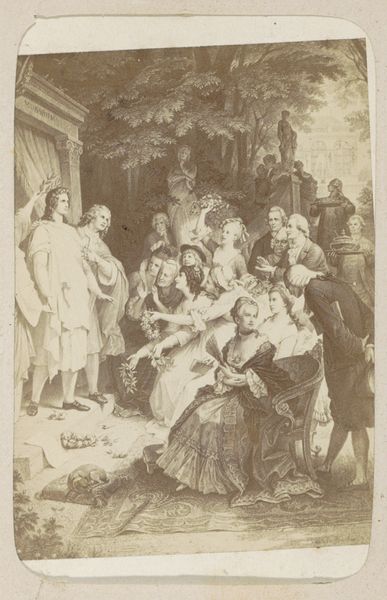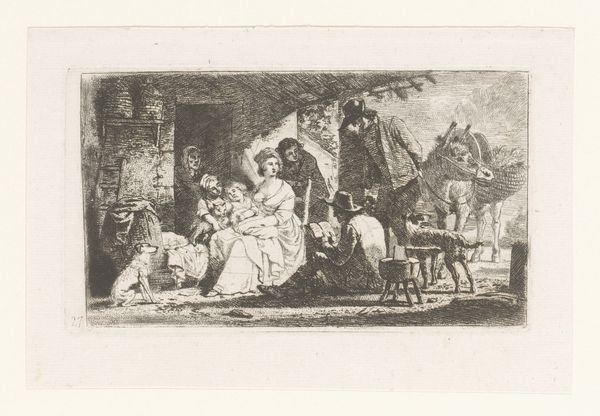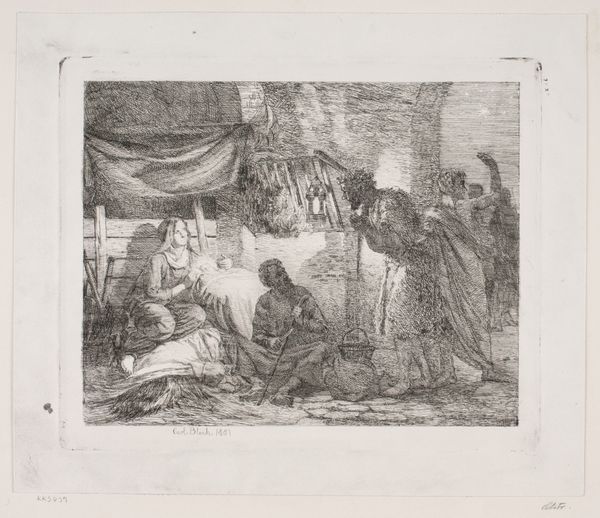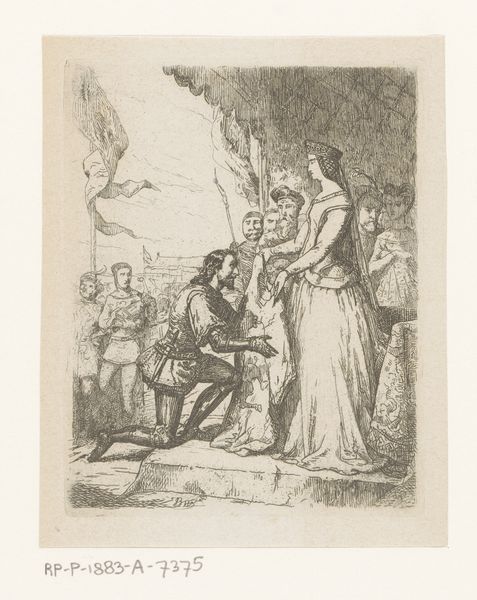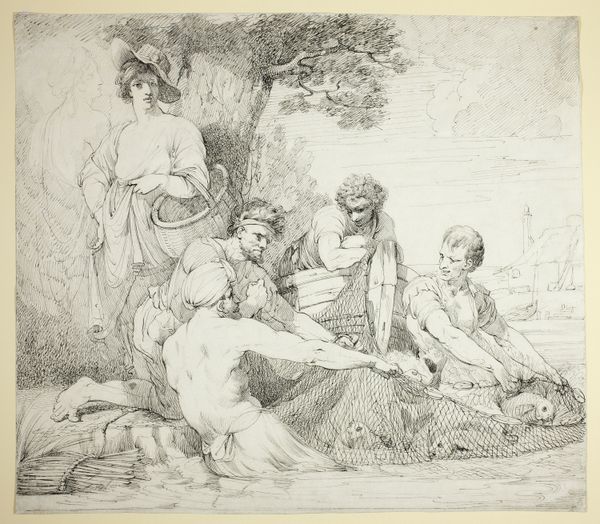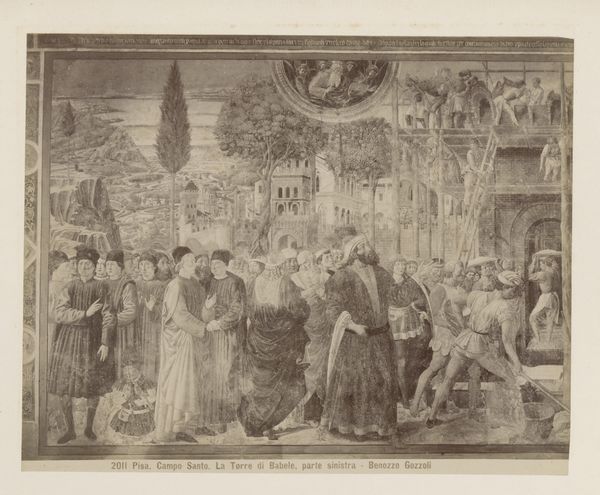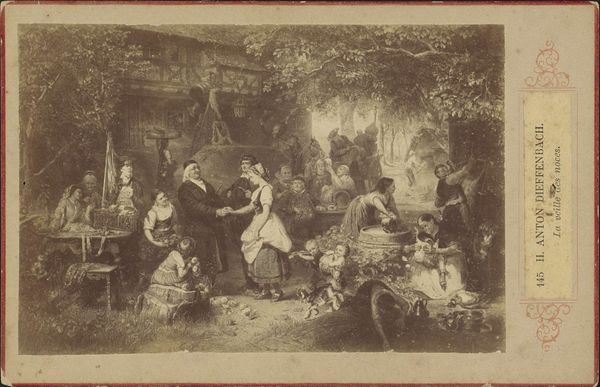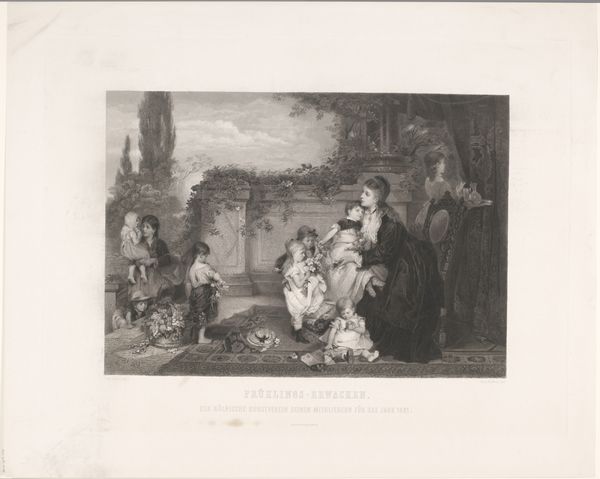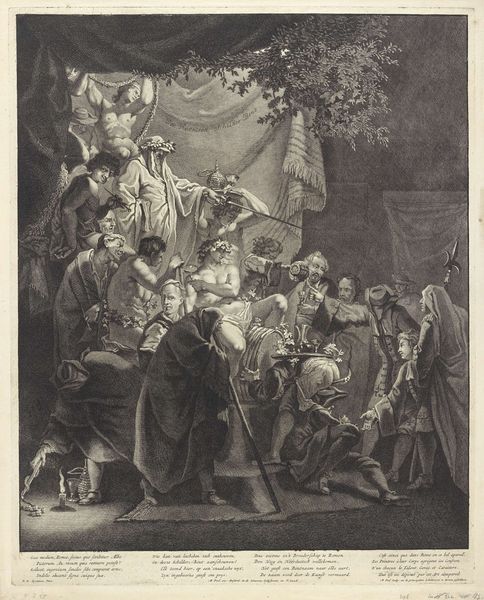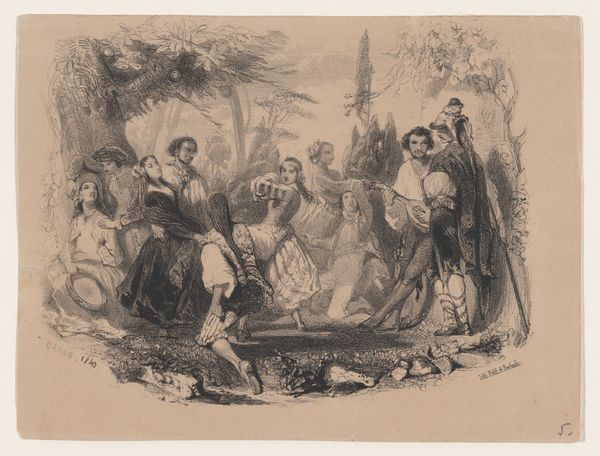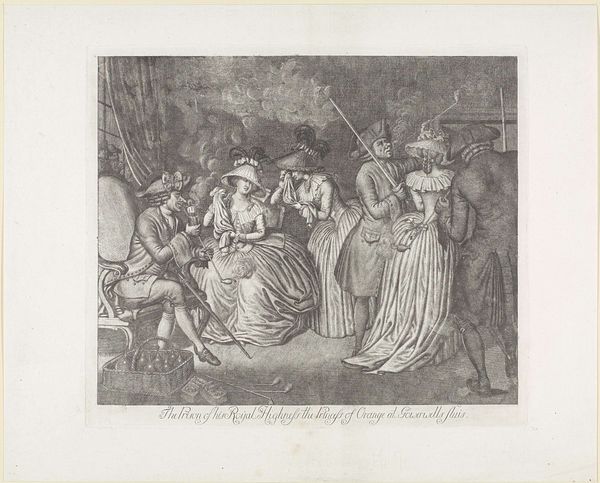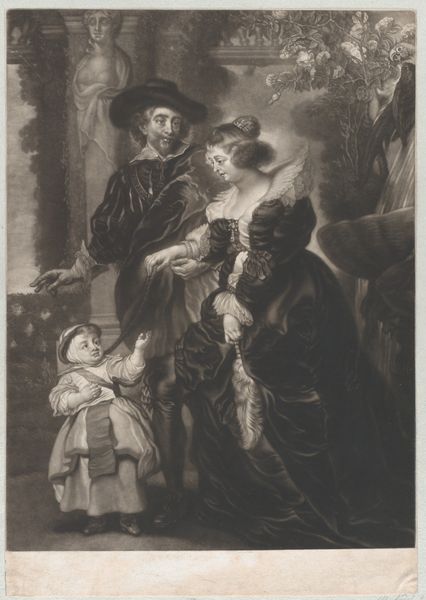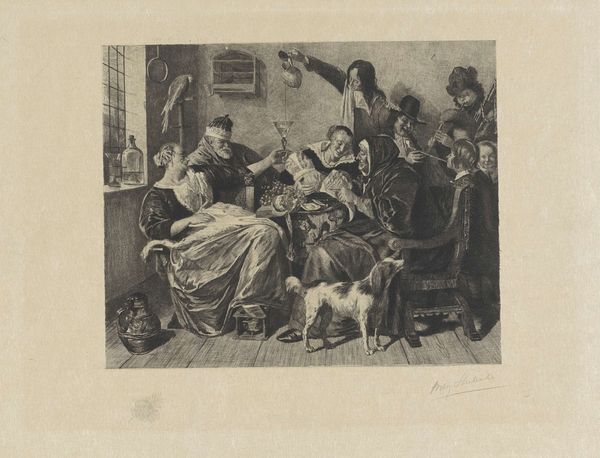
drawing, lithograph, print, ink, pen
#
drawing
#
lithograph
# print
#
charcoal drawing
#
ink
#
pen
#
genre-painting
Dimensions: height 59 mm, width 92 mm
Copyright: Rijks Museum: Open Domain
Curator: First impression: faded elegance. It's like witnessing a ghostly parade of historical figures emerging from sepia-toned dreams. Editor: That's beautifully put. This is a lithograph from around 1855 titled “Litho van Henri Baron” by Eduard Isaac Asser, currently held in the Rijksmuseum's collection. What’s striking is Asser’s process; he merges pen, ink and drawing techniques on lithographic stone. Curator: There's a definite performative element—they're posturing, aren't they? Like actors in a play where the stage lighting is about to fail. See the confident swagger of the man with the feathered hat contrasted with the bowing pose from the left? I wonder if they are performing or getting ready to perform something? Editor: Indeed. Consider the costuming: elaborate dresses, oversized collars, and don't forget the detail given to the hats! There's a whole system of production implied by each careful line in this lithograph, artisans crafting fabrics, embellishments and tailoring techniques. This all speaks to status and visibility within a specific social hierarchy. Curator: I see figures crowded around a fountain too, a sort of court jester, it looks as though it would be very exciting. You're right though— the sheer labor that goes into those clothes is amazing. Thinking about this lithograph, this ghostly, historical snapshot makes me feel as if I'm there on location myself as I stare. Editor: Absolutely, that sense of labor becomes intrinsic to the reading of the image. Asser, through his careful rendering of textures and form, allows us to visualize a whole economy and it seems quite magical at that. The act of translating those processes into a readily reproducible print makes that information even more accessible to new eyes and discussions. Curator: In a way, it's like alchemy, isn't it? Asser transforming everyday observation, class divides, performance into something that feels both permanent and ephemeral all at once. I wonder what Asser himself would think knowing it lives on in a museum almost two centuries after its creation. Editor: Right? Perhaps he knew his astute social and material observations would resonate, becoming a touchstone for examining our own relationship to status, production and artistic legacy, just as it’s sparked in us today.
Comments
No comments
Be the first to comment and join the conversation on the ultimate creative platform.
